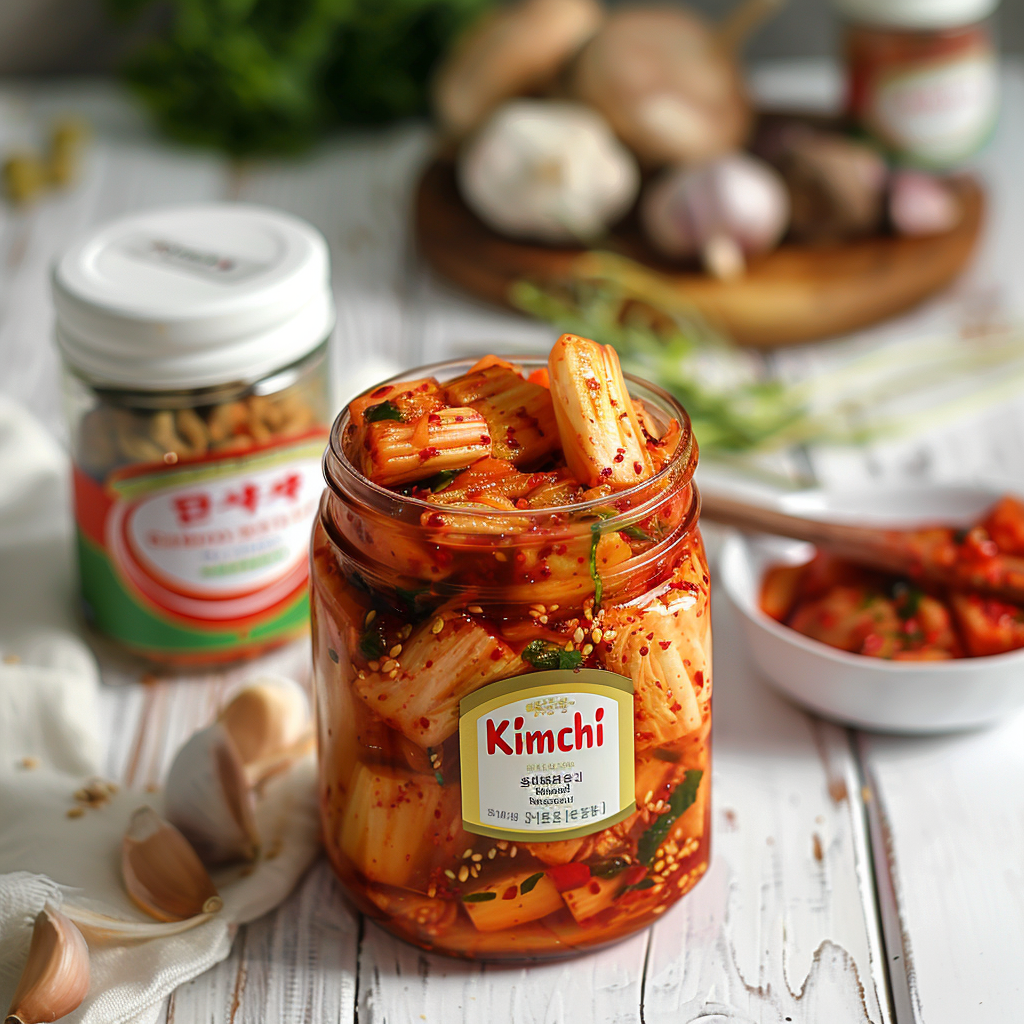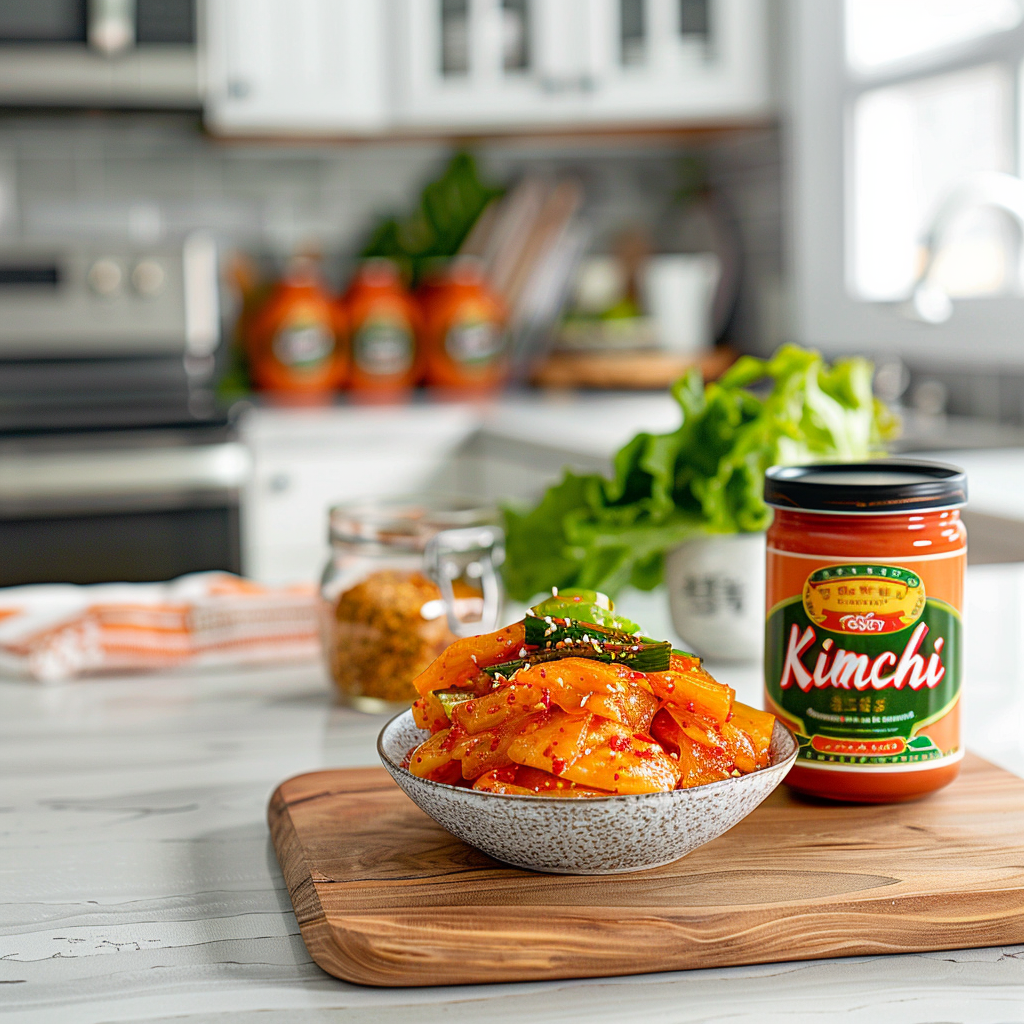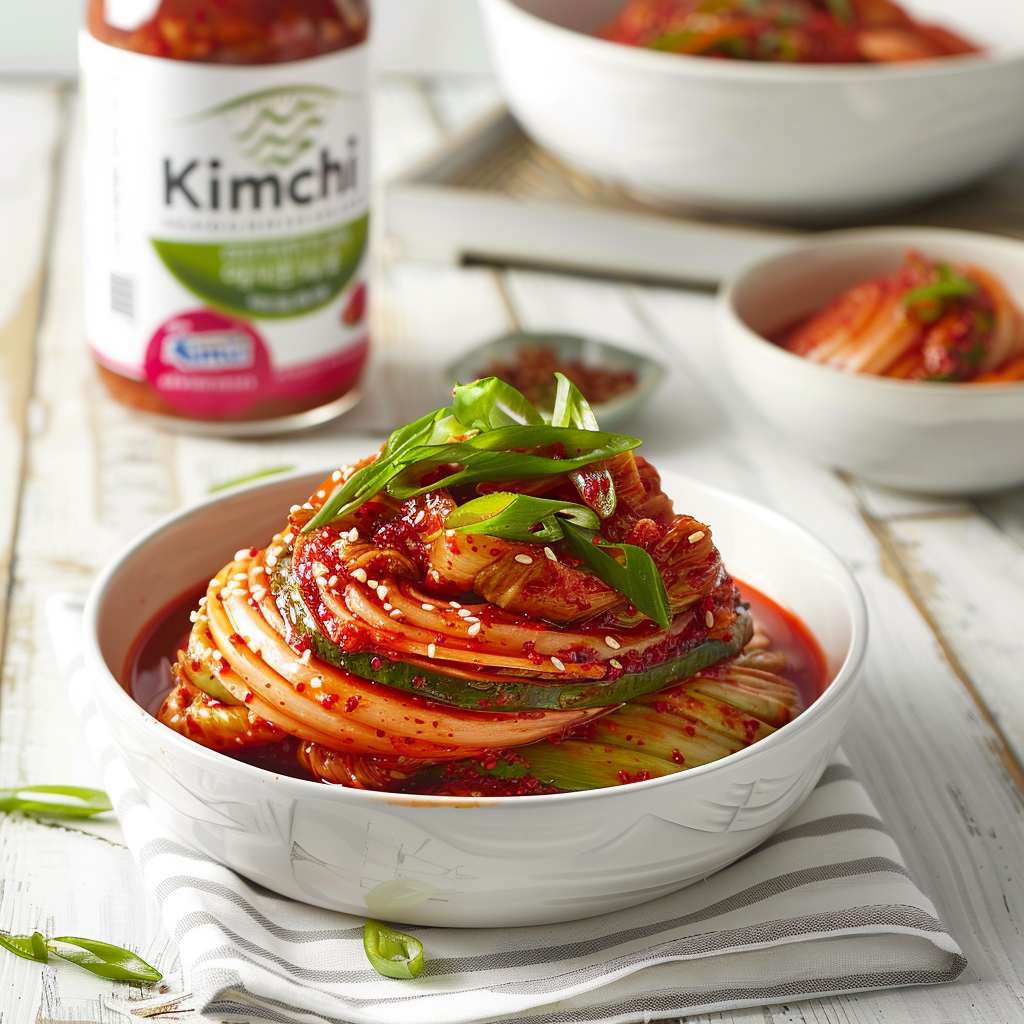Hey, Welcome to my little corner of the internet where I share my love for cooking and all things delicious.Today I will share Kimchi Recipe through Beyond the Bayou Blog. Growing up, my grandma used to make the most amazing kimchi in her tiny kitchen along with Kimchi Fried Rice and Tteokbokki. The aroma would fill the entire house. As she worked her magic, I would watch, wide-eyed, marveling at the way she transformed simple ingredients into something truly extraordinary.
Fast forward to today, and I find myself craving that same taste of home. So, armed with her handwritten recipe and a few tweaks of my own, I set out to recreate her masterpiece. And you know what? It’s not just about the dish, it’s about the memories it brings back, the warmth of family gatherings, and the joy of sharing a meal together. So, whether you’re a seasoned chef or a kitchen newbie, I invite you to join me on this culinary journey. Let’s roll up our sleeves, get our hands dirty, and create some delicious memories together. Ready to dive in? Let’s get cooking.
What is Kimchi?
Kimchi is a traditional Korean dish renowned for its pungent flavor and health benefits. Essentially, it’s a fermented vegetable dish, typically made from cabbage and radishes, although there are many regional and seasonal variations. The vegetables are seasoned with a mix of spices, including chili powder, garlic, ginger, and salt. After preparation, the mixture is left to ferment, allowing beneficial bacteria to proliferate.
This fermentation process not only enhances the flavor but also results in the development of probiotics, which are beneficial for gut health. This is a staple in Korean cuisine, often served as a side dish or incorporated into various recipes, such as stews, pancakes, and fried rice. Beyond its culinary significance, It holds cultural importance, symbolizing Korea’s rich heritage and culinary tradition. Its complex flavors and nutritional profile have made it increasingly popular worldwide.
How to make Kimchi Recipe?

To make kimchi, start by thoroughly washing and chopping the main vegetable, usually Napa cabbage or Korean radishes, into bite-sized pieces. Next, sprinkle the vegetables with salt and let them sit for a few hours to draw out excess moisture. Meanwhile, prepare the seasoning paste by blending together garlic, ginger, chili powder, fish sauce, and sometimes sugar or other spices, depending on the recipe.
Once the vegetables have wilted, rinse them to remove excess salt and drain well. Then, thoroughly mix the seasoning paste with the vegetables, ensuring they’re evenly coated. Some recipes may include additional ingredients like shredded carrots, scallions, or daikon radish for added flavor and texture.
Pack the seasoned vegetables tightly into a clean, airtight container, pressing down firmly to remove air bubbles. Leave some space at the top for expansion during fermentation. Seal the container and let it ferment at room temperature for a few days to several weeks, depending on your preference for taste and texture. During fermentation, gases will build up, so it’s essential to burp the container periodically to release pressure.
Once the kimchi reaches the desired level of fermentation, transfer it to the refrigerator to slow down the process. It can be enjoyed immediately or aged for several weeks to develop deeper flavors. Remember, homemade kimchi tends to be more potent and flavorful than store-bought varieties, offering a unique taste of Korean cuisine.
Kimchi Recipe
Equipment
- Large mixing bowl
- Knife and Cutting Board
- Blender or Food Processor
- Measuring Spoons and Cups
- Clean, airtight storage containers
Ingredients
- 1 medium Napa cabbage
- 2 large Korean radishes
- 1 cup Korean coarse sea salt for salting the vegetables
- 5 cloves garlic
- 1 thumb-sized piece of ginger
- 1/4 cup Korean red chili powder
- 2 tablespoons fish sauce
- 1 tablespoon sugar optional, for added sweetness
- 2 carrots
- 4 scallions
- 1 small daikon radish
Instructions
- Prepare Vegetables: Wash and chop 1 medium Napa cabbage and 2 large Korean radishes into bite-sized pieces. Place them in a large mixing bowl.
- Salt Vegetables: Sprinkle 1 cup of Korean coarse sea salt over the chopped vegetables. Toss well to ensure even coating. Let them sit for a few hours to draw out excess moisture, occasionally tossing them.
- Make Seasoning Paste: In a blender or food processor, combine 5 cloves of garlic, 1 thumb-sized piece of ginger (peeled), 1/4 cup of Korean red chili powder, 2 tablespoons of fish sauce, and 1 tablespoon of sugar (optional). Blend until smooth.
- Prepare Additional Ingredients: Shred 2 carrots, thinly slice 4 scallions, and julienne 1 small daikon radish.
- Rinse and Drain Vegetables: After the vegetables have wilted, rinse them under cold water to remove excess salt. Drain well in a colander.
- Mix Vegetables and Seasoning: In the large mixing bowl, combine the rinsed and drained vegetables with the seasoning paste, shredded carrots, sliced scallions, and julienned daikon radish. Mix well until all the vegetables are evenly coated with the seasoning.
- Pack into Fermentation Container: Pack the seasoned vegetables tightly into a clean, airtight fermentation container, pressing down firmly to remove air bubbles.
- Ferment: Close the container and let it ferment at room temperature for a few days to several weeks, depending on your preferred level of fermentation. Remember to burp the container periodically to release pressure.
Notes
Nutrition
Time for the Tips!
- Be Mindful of Salting: Ensure the vegetables are evenly salted during the salting process to draw out excess moisture effectively.
- Fermentation Time: Taste your kimchi periodically during fermentation to gauge its flavor and decide when it’s reached your desired level of tanginess.
- Gloves: Consider wearing gloves when handling spicy ingredients like chili powder to avoid irritation, especially if you have sensitive skin.
- Fermentation Container: Use a clean, airtight container for fermentation to prevent contamination and ensure a successful fermentation process.
- Press Down Vegetables: Pack the seasoned vegetables tightly into the fermentation container and press down firmly to eliminate air pockets, which can lead to spoilage.
- Experiment with Additional Ingredients: Feel free to customize your dish by adding other vegetables or ingredients like fruits, seafood, or even kimchi brine from a previous batch for extra flavor complexity.
- Storage: Store it in airtight containers in the refrigerator once it’s fermented to your liking. This slows down the fermentation process and preserves its flavor.
What Does Kimchi Taste Like?

Kimchi has quite a complex flavor and not every kimchi has the same taste.First, it is slightly salty because it has been pickled in salty brine for as little as 30 minutes to overnight. Second, it is slightly spicy in general, excluding white kimchi, which does not use any Korean chili flakes.
Third, it has umami flavor. It’s also seasoned with Korean fish sauce to aid fermentation, so as time goes by, the deeper the kimchi’s flavor develops. Forth, ripened kimchi is sour and has a pungent smell. This stage of kimchi is great for cooking.
Though one thing I know is that even though many people love kimchi, there are many people who don’t like it because of its strong garlic smell and taste. Also, the longer it ferments, the stronger the smell and flavor will be, as if something is rotting in your fridge.
What to do with Leftover?
- Pancakes: Mix chopped kimchi into a batter made from flour, eggs, and water to make savory pancakes. Fry them until crispy and golden brown for a delicious appetizer or snack.
- Soup: Simmer leftover kimchi with broth, tofu, vegetables, and sometimes pork or seafood to make a hearty and comforting Korean stew. Serve it with steamed rice for a complete meal.
- Grilled Cheese Sandwich: Layer chopped kimchi between slices of cheese and bread before grilling to create a unique and flavorful twist on the classic grilled cheese sandwich.
- Tacos or Quesadillas: Add chopped kimchi to tacos or quesadillas along with your favorite fillings like grilled meat, cheese, avocado, and salsa for a fusion-inspired meal.
- Stir-Fry: Stir-fry leftover kimchi with your choice of protein (such as beef, pork, chicken, or tofu) and vegetables for a quick and easy weeknight dinner. Serve it over rice or noodles.
- Salad: Toss chopped kimchi with mixed greens, sliced cucumbers, shredded carrots, and a simple vinaigrette for a tangy and refreshing salad.
Frequently Asked Questions (FAQs)
Q: Is kimchi spicy?
A: It can vary in spiciness depending on the amount of chili powder or chili flakes used in the recipe. Some varieties are quite spicy, while others are milder. Adjust the level of spiciness to your taste preferences.
Q: Is kimchi vegetarian/vegan?
A: Traditional kimchi often contains fish sauce or shrimp paste as an ingredient for umami flavor. However, there are vegetarian and vegan versions of it that omit these ingredients, relying solely on plant-based seasonings for flavor.
Q: Can I make it without fish sauce or shrimp paste?
A: Yes, you can make this without fish sauce or shrimp paste by using alternative umami-rich ingredients such as soy sauce, miso paste, or kombu (dried kelp). This allows for vegan or vegetarian variations of it.

